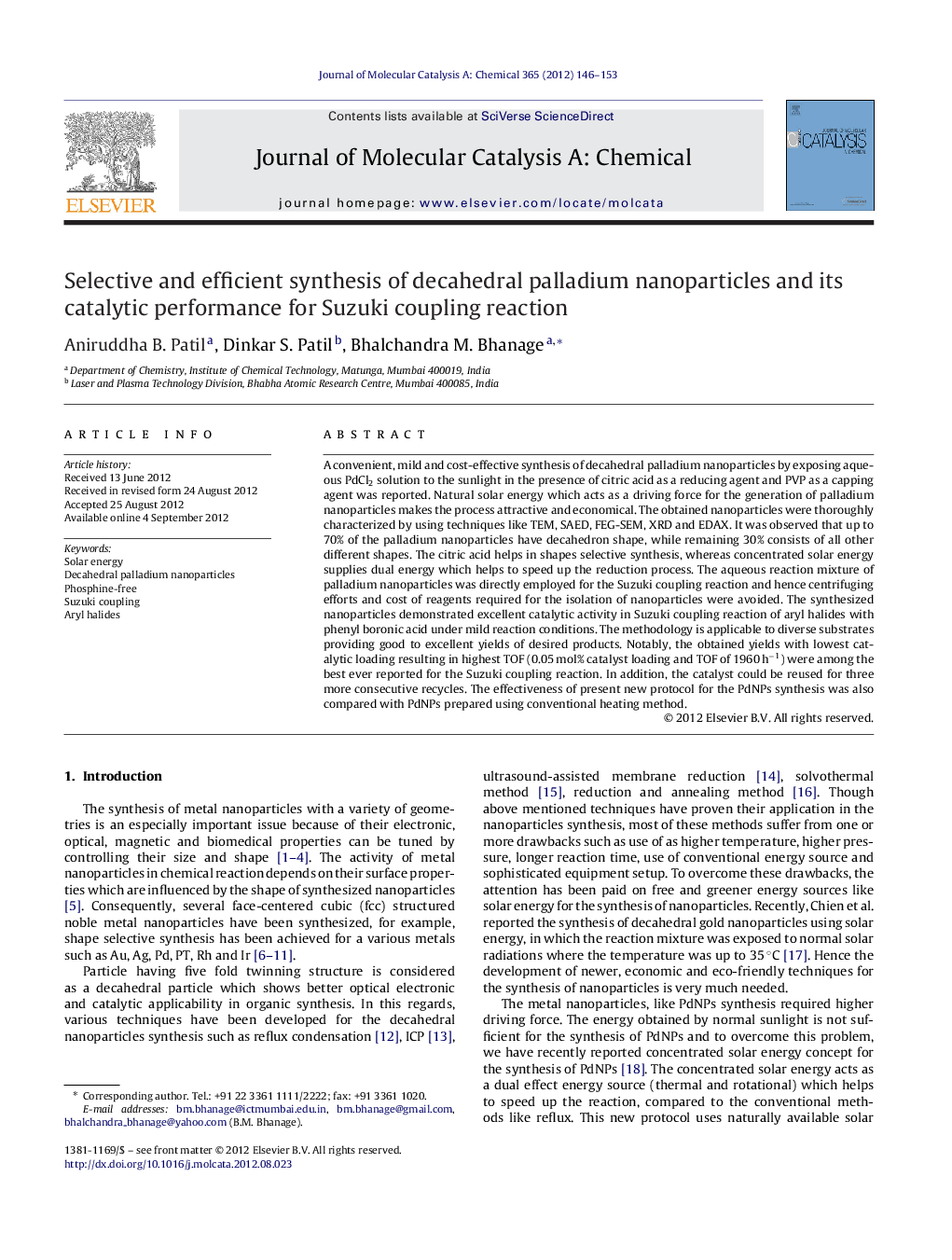| Article ID | Journal | Published Year | Pages | File Type |
|---|---|---|---|---|
| 66090 | Journal of Molecular Catalysis A: Chemical | 2012 | 8 Pages |
A convenient, mild and cost-effective synthesis of decahedral palladium nanoparticles by exposing aqueous PdCl2 solution to the sunlight in the presence of citric acid as a reducing agent and PVP as a capping agent was reported. Natural solar energy which acts as a driving force for the generation of palladium nanoparticles makes the process attractive and economical. The obtained nanoparticles were thoroughly characterized by using techniques like TEM, SAED, FEG-SEM, XRD and EDAX. It was observed that up to 70% of the palladium nanoparticles have decahedron shape, while remaining 30% consists of all other different shapes. The citric acid helps in shapes selective synthesis, whereas concentrated solar energy supplies dual energy which helps to speed up the reduction process. The aqueous reaction mixture of palladium nanoparticles was directly employed for the Suzuki coupling reaction and hence centrifuging efforts and cost of reagents required for the isolation of nanoparticles were avoided. The synthesized nanoparticles demonstrated excellent catalytic activity in Suzuki coupling reaction of aryl halides with phenyl boronic acid under mild reaction conditions. The methodology is applicable to diverse substrates providing good to excellent yields of desired products. Notably, the obtained yields with lowest catalytic loading resulting in highest TOF (0.05 mol% catalyst loading and TOF of 1960 h−1) were among the best ever reported for the Suzuki coupling reaction. In addition, the catalyst could be reused for three more consecutive recycles. The effectiveness of present new protocol for the PdNPs synthesis was also compared with PdNPs prepared using conventional heating method.
Graphical abstractFigure optionsDownload full-size imageDownload high-quality image (219 K)Download as PowerPoint slideHighlights► Decahedral PdNPs synthesized using concentrated solar energy in aqueous medium. ► PdNPs solution employed for Suzuki coupling reaction (avoid isolation of PdNPs). ► Reporting lowest catalyst loading and highest TOF value for Suzuki reaction. ► The developed protocol was applicable for various derivatives of aryl halides. ► The catalyst works efficiently for three consecutive recycles.
